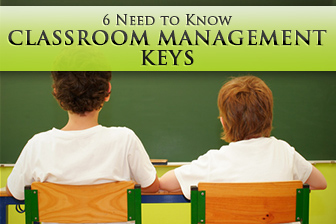But Iím a Teacher Not a Manager: Why You Still Need Good Classroom Management


Not only do ESL teachers regularly encounter language barriers and cultural conflicts, they have to be some of the most flexible teachers on the planet. ESL teachers, more often than not, have to be prepared to teach students at any language level and ability and often have to teach multiple age levels in the same classroom. This mixture can lead to confusion and frustration for both you and your students, but keeping your classroom management in top form can make a big difference. The educators who are clear with their expectations and are supportive of their students will find that the potential stumbling blocks actually turn out to be what makes their classes special.

A typical ESL class includes students studying for several different reasons. Some may hope to use English in education, some in business, and some to fulfill a school or parental requirement. When students have so many reasons for studying, some are bound to be less engaged than others. To encourage your students to engage and participate up to your standards, reward the behavior you want to see. For younger students it may be as simple as giving out stickers for good participation or test scores. For adults you may offer no homework passes, having class outside, a food day or other appealing prizes. Whatever rewards you offer, be sure to be consistent and public with the rewards you are giving, and make sure your prizes appeal to your students.
In addition to offering physical rewards for good behavior, make a point of offering verbal praise as well. When you do, be sure to focus on specific behavior rather than personality attributes. So rather than saying, “You are such a gifted language learner,” your praise should be more like, “You really focused during that exercise. You did a great job.” If you give this kind of public positive attention, you are likely to draw in a few misbehaving students who want the same type of attention. In addition, it will communicate to your class what types of behavior you are looking for.
If you are giving your students rewards and public praise, you are already offering positive reinforcement. You can make an even bigger impact with this positive feedback by not focusing on misbehavior of your students. When students want attention, some may choose to act out or misbehave in class. After all, negative attention is still attention. Rather than giving them that negative attention, simply redirect them to the activity at hand or to the behavior you are looking for. By not making a big deal of their misdeeds, you communicate to them that only appropriate in class behavior will get them the attention they seek. This strategy will also keep classroom disruption to a minimum and allow your other students to remain focused.
Once your students know your expectations for class performance, you may just find that your class starts encouraging positive behavior in each other. You should support these efforts of your students, and you can even make classroom management a communal goal by offering rewards for group behavior or teamwork. When everyone’s rewards depend on every member of the class or their team, individuals will want all their members to act appropriately.
Though it may seem too simple of a solution, sometimes all it takes to reign in misbehaving students is to get a little closer to them. Moving around the classroom during instruction as well as class activities will not only let you check in on how your students are doing, it will send the message that you are right there with your students. Standing near a student who misbehaves or joining an unfocused group for a class activity may be all you need to get the group to settle and start behaving. In addition, be strategic when you set up round table discussions. If students tend to talk too much, sit them next to you. Quieter students should be positioned directly across from you. This will encourage the shy students to speak up while the natural talkers will be less likely to take over the group discussion.
Finally, one of the biggest keys to good classroom management is respect. It is essential that you treat your students with respect and that you require them to do the same with you. Don’t limit this expectation to the student-teacher relationship, though. Expecting and requiring your students to respect one another while in your classroom will make a big difference in your class as well. When students know you won’t tolerate mocking, insults or general disrespect, the tension in your classroom will wane and your students will find it easier to focus and get the work done. They may even find a friend they never thought they would have.
No class is without problems all of the time, but you don’t have to let trouble rule the roost in your classroom. By making your expectations clear and using these tools to elicit good behavior from your students, your class will be in the right mindset to learn. If you are in the middle of a semester and are struggling with classroom management, it’s not too late. Start implementing these strategies, and you will see a difference in your students before you know it.